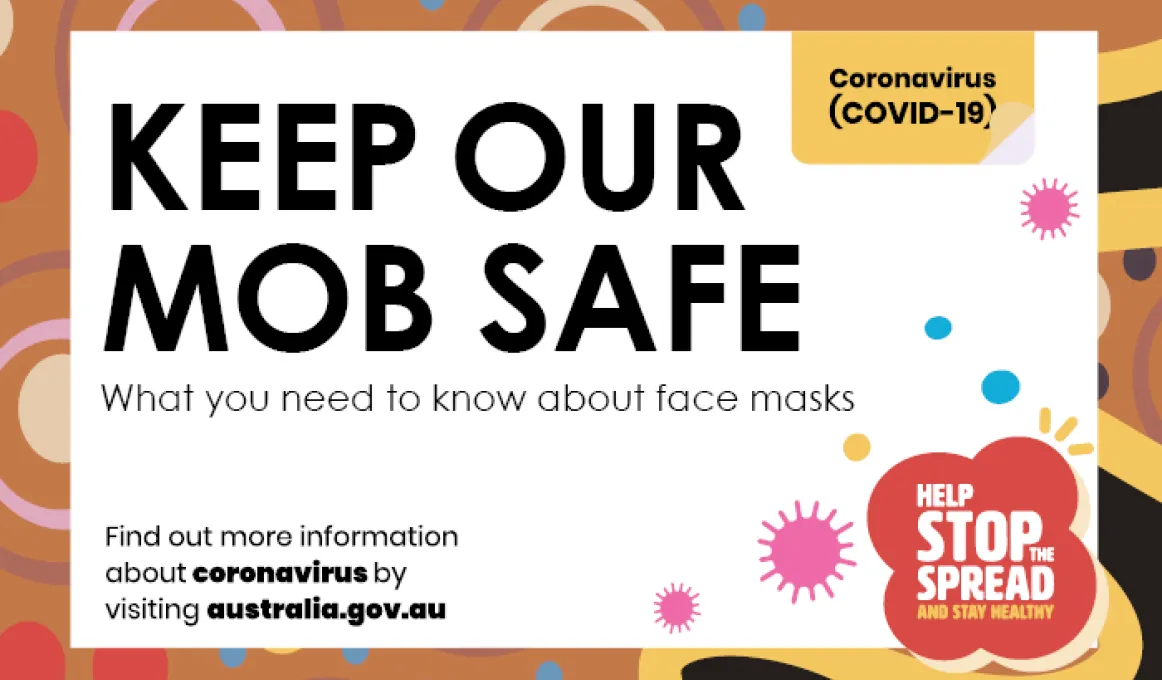What you need to know about face masks

Tips on wearing face masks and staying safe.
This year, we all have a role to play to keep our mob safe from COVID-19. This means that some of us may need to wear a mask when we leave home to help control the spread of the virus.
If you live in Victoria you need to wear a mask or face covering whenever you leave home. If you live in New South Wales you should wear a face mask when you leave home in situations when you can’t stay 1.5 metres away from other people.
Wearing a mask can help protect you, Elders and the wider community, but it’s important that they are worn the right way. This includes:
- Wash your hands with soap or use hand sanitiser before putting a mask on, and right after you take it off.
- Make sure it covers your mouth and your nose – don’t let it hang around your neck. The mask should fit snugly around your face.
- If your mask has a metal nose strip, make sure it is shaped across your nose.
- Once your mask is on, don't pull it up or down, keep it on until you get home.
- If your mask gets damp or torn, you need to change it.
- Don’t touch the front of your mask.
- When you take your mask off, remove it from the ears (don’t grab the front), and put it straight in the bin or the wash.
- Single use masks can only be used once, so after wearing one it should go in the bin straight away.
- If you have a reusable cloth mask, you can wash it in the washing machine with other clothes. You can also hand wash it using soap and the warmest appropriate water setting for the cloth.
- Dry the cloth mask in a clothes dryer or in fresh air before you re-use it. Keep it clean in a sealed plastic bag ready for the next use.
It’s also important to keep doing what we’ve done this year to keep our communities safe. This includes:
- Staying 1.5 metres away from other people
- Staying away from crowded places
- Washing your hands often with soap and water (or use an alcohol-based hand sanitiser)
- Coughing and sneezing into our elbows, and if you are unwell, staying at home
Getting tested if you have any symptoms (cough, fever, sore throat)
Find out more
States and territories will make decisions about wearing masks based on the local situation. It is important to stay up to date with this information – visit your state or territory website or australia.gov.au
The Victorian Government has also provided information about masks for Aboriginal community-controlled organisations and Aboriginal health staff - dhhs.vic.gov.au/coronavirus-information-aboriginal-and-torres-strait-islander-communities